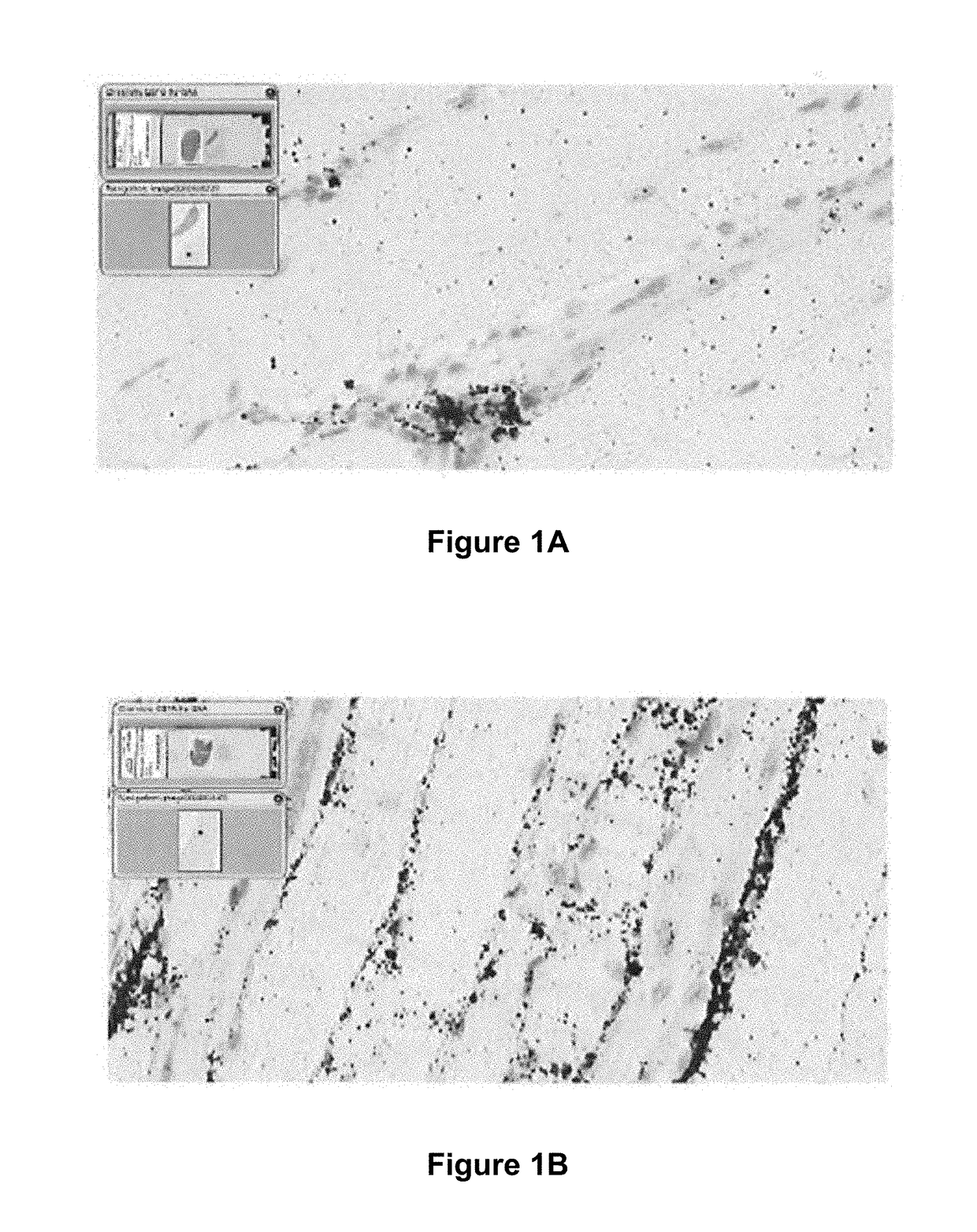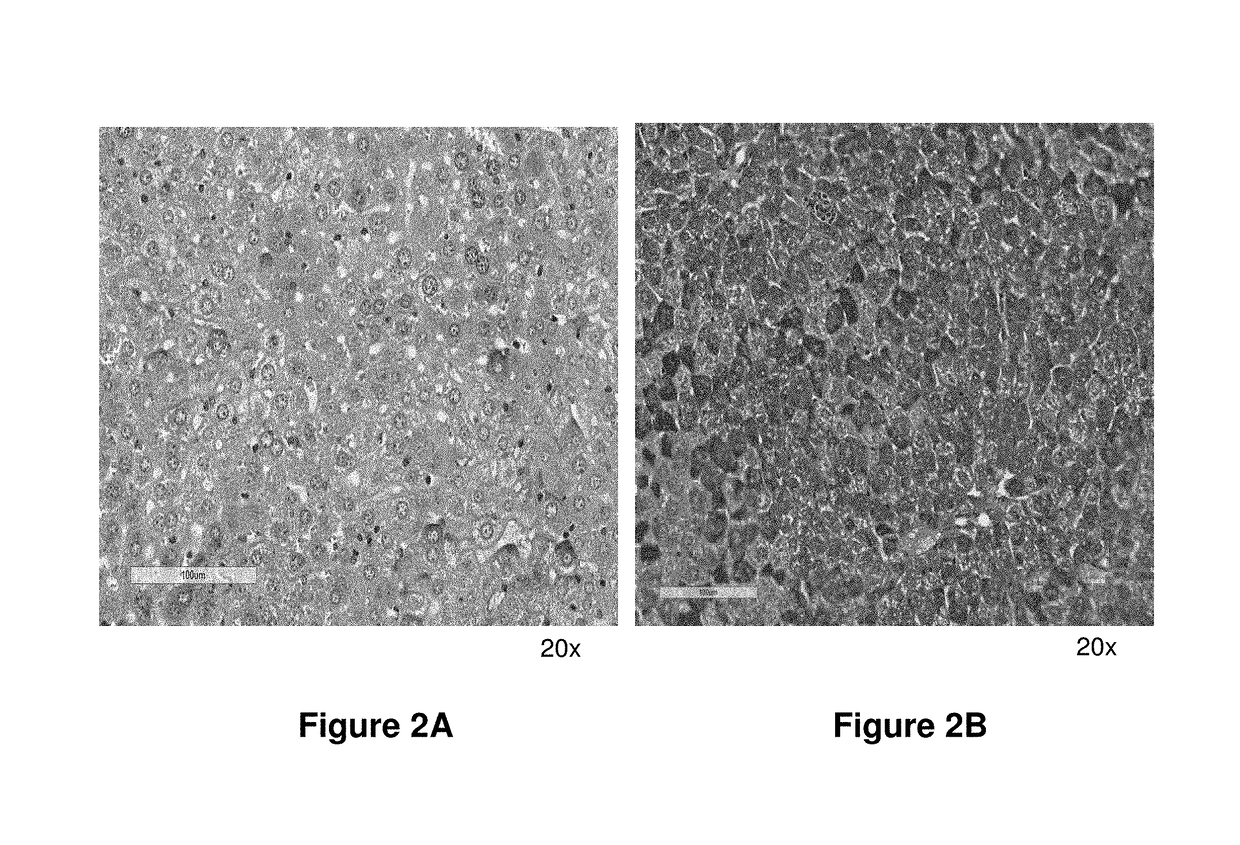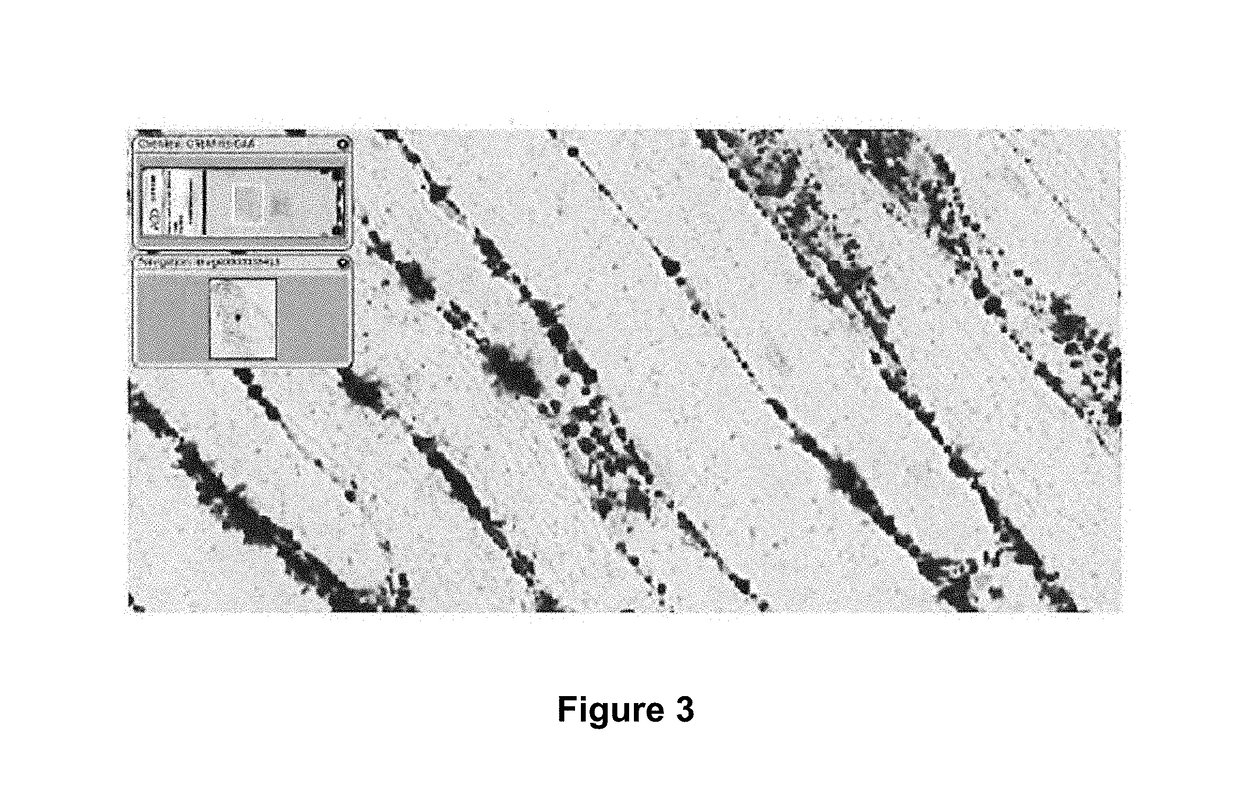MRNA therapy for pompe disease
a pompe disease and mrna technology, applied in the field of pompe disease, can solve the problems of glycogen accumulation, ambulatory difficulties, respiratory insufficiency, cell and tissue destruction, etc., and achieve the effect of high-efficiency and sustained protein production and successful reduction
- Summary
- Abstract
- Description
- Claims
- Application Information
AI Technical Summary
Benefits of technology
Problems solved by technology
Method used
Image
Examples
example 1
Liposome Formulations for GAA mRNA Delivery and Expression
[0223]This example provides exemplary liposome formulations for effective delivery and expression of GAA mRNA in vivo.
Lipid Materials
[0224]The formulations described herein include a multi-component lipid mixture of varying ratios employing one or more cationic lipids, helper lipids (e.g., non-cationic lipids and / or cholesterol-based lipids) and PEGylated lipids designed to encapsulate mRNA encoding GAA protein. Cationic lipids can include (but not exclusively) DOTAP (1,2-dioleyl-3-trimethylammonium propane), DODAP (1,2-dioleyl-3-dimethylammonium propane), DOTMA (1,2-di-O-octadecenyl-3-trimethylammonium propane), DLinDMA (Heyes, J.; Palmer, L.; Bremner, K.; MacLachlan, I. “Cationic lipid saturation influences intracellular delivery of encapsulated nucleic acids”J. Contr. Rel. 2005, 107, 276-287), DLin-KC2-DMA (Semple, S. C. et al. “Rational Design of Cationic Lipids for siRNA Delivery”Nature Biotech. 2010, 28, 172-176), C12-2...
example 2
us Administration of GAA mRNA-Loaded Liposome Nanoparticles
[0250]This example illustrates exemplary methods of administering GAA mRNA-loaded liposome nanoparticles and methods for analyzing GAA mRNA and glycogen in various target tissues in vivo.
[0251]All studies were performed using GAA knock out mice. Mice were treated with human GAA mRNA-loaded cKK-E12-based lipid nanoparticles by a single bolus tail-vein injection of a 1.0 mg / kg dose. Mice were sacrificed and perfused with saline at 30 minutes, 3 hours, 6 hours, 12 hours, 24 hours, 48 hours, 72 hours and 7 days.
[0252]Tissues, such as liver and muscle, of each mouse were harvested, apportioned into separate parts, and stored in either 10% neutral buffered formalin or snap-frozen and stored at −80° C. for analysis.
[0253]Direct detection of the active pharmaceutical ingredient (GAA mRNA) in the muscle of the treated mice was achieved using in situ hybridization (ISH) based methods. As demonstrated in FIGS. 1A and 1B, the exogenous ...
example 3
ular Administration of GAA mRNA-Loaded Liposome Nanoparticles
[0255]This example illustrates exemplary methods of administering GAA mRNA-loaded liposome nanoparticles and methods for analyzing GAA mRNA and glycogen in various target tissues in vivo.
[0256]All studies were performed using GAA knock out mice. Mice were treated with human GAA mRNA-loaded cKK-E12-based lipid nanoparticles by a single intramuscular injection of a 1.0 mg / kg dose. Mice were sacrificed and perfused with saline at 24 hours.
[0257]Tissues, such as liver and muscle, of each mouse were harvested, apportioned into separate parts, and stored in either 10% neutral buffered formalin or snap-frozen and stored at −80° C. for analysis.
[0258]Direct detection of the active pharmaceutical ingredient (GAA mRNA) in the muscle of the treated mice was achieved using in situ hybridization (ISH) based methods. As demonstrated in FIG. 3, the exogenous human GAA messenger RNA was detected at high levels at 24 hours.
[0259]Quadriceps...
PUM
| Property | Measurement | Unit |
|---|---|---|
| size | aaaaa | aaaaa |
| size | aaaaa | aaaaa |
| size | aaaaa | aaaaa |
Abstract
Description
Claims
Application Information
 Login to View More
Login to View More - R&D
- Intellectual Property
- Life Sciences
- Materials
- Tech Scout
- Unparalleled Data Quality
- Higher Quality Content
- 60% Fewer Hallucinations
Browse by: Latest US Patents, China's latest patents, Technical Efficacy Thesaurus, Application Domain, Technology Topic, Popular Technical Reports.
© 2025 PatSnap. All rights reserved.Legal|Privacy policy|Modern Slavery Act Transparency Statement|Sitemap|About US| Contact US: help@patsnap.com



